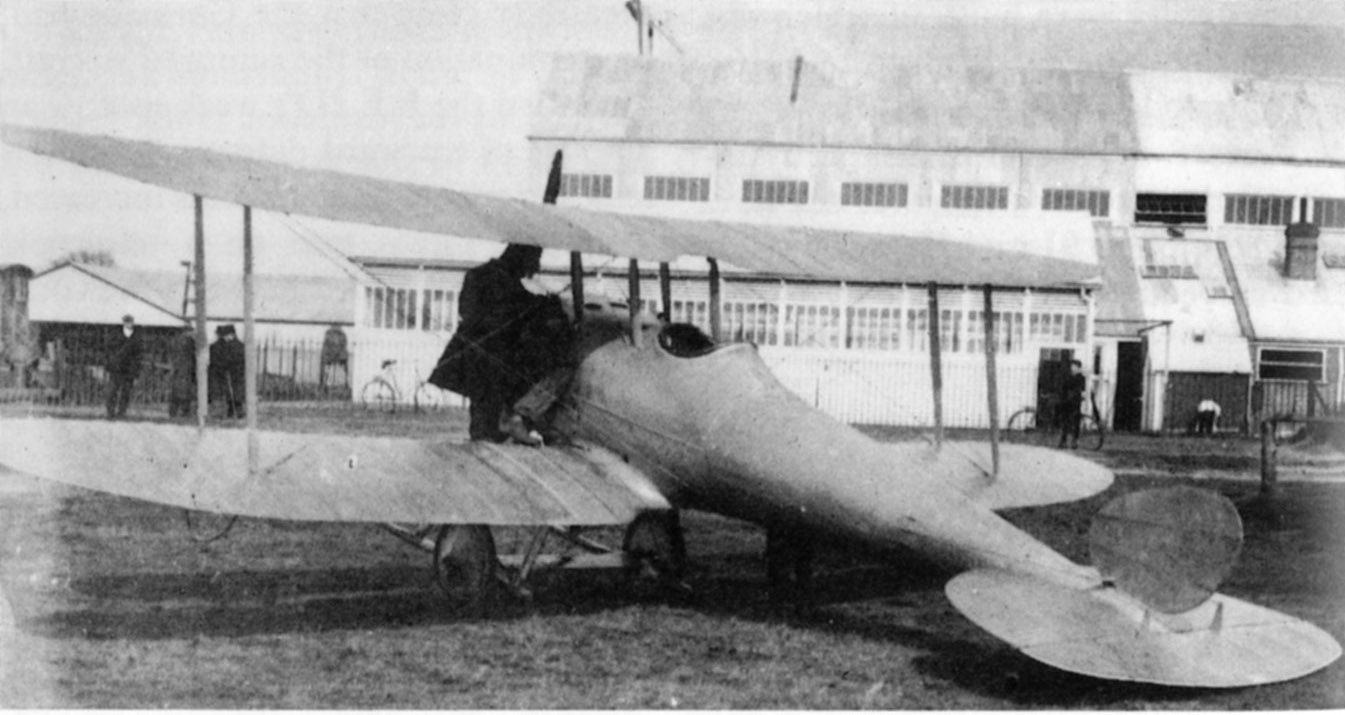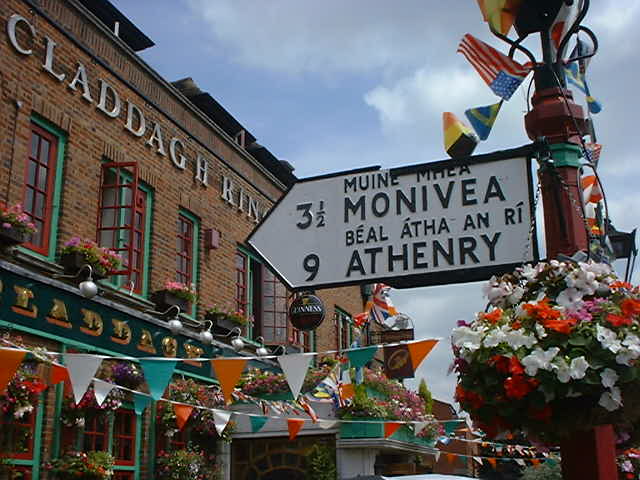|
A.E. Clouston
Air Commodore Arthur Edmond Clouston, (7 April 1908 – 1 January 1984) was a New Zealand-born British test pilot and senior officer in the Royal Air Force. He took part in several air races and record-breaking flights in the 1930s. Early life Arthur Edmond Clouston was born on 7 April 1908 at Motueka in New Zealand, the son of Robert Edmond Clouston, a mining engineer, and his wife Ruby. Educated at a school in Collingwood, Clouston sought to have an career as a mariner but this was prevented by illness. He instead established a automotive workshop in Westport. The exploits of the Australian aviator Charles Kingsford Smith inspired Clouston to learn to fly at the Marlborough Aero Club at Omaka Aerodrome, near Blenheim. Soon a proficient pilot, in October 1929 he established an altitude record of for the de Havilland Moth. Early in 1930 Clouston was reprimanded by his instructor for stunting his aircraft without approval during an air pageant at Blenheim. Soon, having qualif ... [...More Info...] [...Related Items...] OR: [Wikipedia] [Google] [Baidu] |
Motueka
Motueka is a town in the South Island of New Zealand, close to the mouth of the Motueka River on the western shore of Tasman Bay / Te Tai-o-Aorere. It is the second largest in the Tasman Region, with a population of as of The surrounding district has a number of apple, pear and kiwifruit orchards, as well as growing a variety of specialised crops such as hops. The area formerly served as the main centre of tobacco growing in New Zealand. A number of small vineyards have also been developed. Nearby beaches (such as Kaiteriteri and Mārahau) are very popular with holidaymakers, and the area around Motueka has one of the country's highest annual sunshine-hour indices. Motueka, as one of the nearest towns to the Abel Tasman and Kahurangi National Parks, has become the base of many tourism ventures, as well as in Nelson Lakes National Park, and in other recreational areas. Extensive limestone cave systems (including Harwoods Hole in the Tākaka Hill area north of Motueka) attr ... [...More Info...] [...Related Items...] OR: [Wikipedia] [Google] [Baidu] |
Charles Kingsford Smith
Sir Charles Edward Kingsford Smith (9 February 18978 November 1935), nicknamed Smithy, was an Australian aviation pioneer. He piloted the first transpacific flight and the first flight between Australia and New Zealand. Kingsford Smith was born in Brisbane. He grew up in Sydney, leaving school at the age of 16 and becoming an engineering apprentice. He joined the Australian Army in 1915 and was a motorcycle despatch rider on the Gallipoli campaign. He later transferred to the Royal Flying Corps and was awarded the Military Cross in 1917 after being shot down. After the war's end, Kingsford Smith worked as a barnstormer in England and the United States before returning to Australia in 1921. He subsequently joined West Australian Airways as one of the country's first commercial pilots. In 1928, Kingsford Smith completed the first transpacific flight, a three-leg journey from California to Brisbane via Hawaii and Fiji. He and his co-pilot Charles Ulm became celebrities, tog ... [...More Info...] [...Related Items...] OR: [Wikipedia] [Google] [Baidu] |
RAE Farnborough
The Royal Aircraft Establishment (RAE) was a British research establishment, known by several different names during its history, that eventually came under the aegis of the UK Ministry of Defence (MoD), before finally losing its identity in mergers with other institutions. The first site was at Farnborough Airfield ("RAE Farnborough") in Hampshire to which was added a second site RAE Bedford (Bedfordshire) in 1946. In 1988 it was renamed the Royal Aerospace Establishment (RAE) before merging with other research entities to become part of the new Defence Research Agency in 1991. History In 1904–1906 the Army Balloon Factory, which was part of the Army School of Ballooning, under the command of Colonel James Templer, relocated from Aldershot to the edge of Farnborough Common in order to have enough space to inflate the new "dirigible balloon" or airship which was then under construction.Walker, P; Early Aviation at Farnborough, Volume I: Balloons, Kites and Airships, Macdona ... [...More Info...] [...Related Items...] OR: [Wikipedia] [Google] [Baidu] |
Royal Aircraft Establishment
The Royal Aircraft Establishment (RAE) was a British research establishment, known by several different names during its history, that eventually came under the aegis of the Ministry of Defence (United Kingdom), UK Ministry of Defence (MoD), before finally losing its identity in mergers with other institutions. The first site was at Farnborough Airfield ("RAE Farnborough") in Hampshire to which was added a second site RAE Bedford (Bedfordshire) in 1946. In 1988 it was renamed the Royal Aerospace Establishment (RAE) before merging with other research entities to become part of the new Defence Research Agency in 1991. History In 1904–1906 the Army Balloon Factory, which was part of the Army School of Ballooning, under the command of Colonel James Templer (balloon aviator), James Templer, relocated from Aldershot to the edge of Farnborough Common in order to have enough space to inflate the new "dirigible balloon" or airship which was then under construction.Walker, P; Early Avi ... [...More Info...] [...Related Items...] OR: [Wikipedia] [Google] [Baidu] |
Test Pilot
A test pilot is an aircraft pilot with additional training to fly and evaluate experimental, newly produced and modified aircraft with specific maneuvers, known as flight test techniques.Stinton, Darrol. ''Flying Qualities and Flight Testing of the Airplane.'' American Institute of Aeronautics and Astronautics, Inc., 1996, p. 265 History Test flying as a systematic activity started during the First World War, at the Royal Aircraft Establishment (RAE) in the United Kingdom. An "Experimental Flight" was formed at the Central Flying School. During the 1920s, test flying was further developed by the RAE in the UK, and by the National Advisory Committee for Aeronautics (NACA) in the United States. In the 1950s, NACA was transformed into the National Aeronautics and Space Administration, or NASA. During these years, as work was done into aircraft stability and handling qualities, test flying evolved towards a more qualitative scientific profession. In the 1950s, test pilots were ... [...More Info...] [...Related Items...] OR: [Wikipedia] [Google] [Baidu] |
Royal Air Force Volunteer Reserve
The Royal Air Force Volunteer Reserve (RAFVR) was established in 1936 to support the preparedness of the U.K. Royal Air Force in the event of another war. The Air Ministry intended it to form a supplement to the Royal Auxiliary Air Force (RAuxAF), the active reserve for the RAF, by providing an additional non-active reserve. However during the Second World War the high demand for aircrew absorbed all available RAuxAF personnel and led the RAFVR to quickly become the main pathway of aircrew entry into the RAF. It was initially composed of civilians recruited from neighbourhood reserve flying schools, run by civilian contractors with largely RAF-trained flying instructors as well as other instructors in related air war functions, such as observers and wireless operators. After the war, and with the end of conscription in the early 1960s, the RAFVR considerably reduced in size and most functions were absorbed into the RAuxAF. The RAFVR now forms the working elements of the Universit ... [...More Info...] [...Related Items...] OR: [Wikipedia] [Google] [Baidu] |
RAF Hendon
Hendon is an urban area in the Borough of Barnet, North-West London northwest of Charing Cross. Hendon was an ancient manor and parish in the county of Middlesex and a former borough, the Municipal Borough of Hendon; it has been part of Greater London since 1965. Hendon falls almost entirely within the NW4 postcode, while the West Hendon part falls in NW9. Colindale to the north-west was once considered part of Hendon but is today separated by the M1 motorway. The district is most famous for the London Aerodrome which later became the RAF Hendon; from 1972 the site of the RAF station was gradually handed over to the RAF Museum. The railways reached Hendon in 1868 with Hendon station on the Midland Main Line, followed by the London Underground further east under the name Hendon Central in 1923. Brent Street emerged as its commercial centre by the 1890s. A social polarity was developed between the uphill areas of Hendon and the lowlands around the railway station. Hendon is l ... [...More Info...] [...Related Items...] OR: [Wikipedia] [Google] [Baidu] |
Hawker Fury I
The Hawker Fury is a British biplane fighter aircraft used by the Royal Air Force in the 1930s. It was a fast, agile aircraft, and the first interceptor in RAF service capable of speed higher than 200 mph (321 kmh). It was the fighter counterpart to the Hawker Hart light bomber. Design and development The Hawker Fury was a development of the earlier Hawker F.20/27 prototype fighter, replacing the radial engine of the F.20/27 with the new Rolls-Royce F.XI V-12 engine (later known as the Rolls-Royce Kestrel), which was also used by Hawker's new light bomber, the Hawker Hart. The new fighter prototype, known as the Hawker Hornet, first flew at Brooklands, Surrey, in March 1929.Mason 1992, p.213. The Hornet was a single-engined biplane, with single bay wings, initially powered by a 420 hp (313 kW) Rolls-Royce F.XIC engine enclosed by a smooth, streamlined cowling but was quickly re-engined with a 480 hp (358 kW) Kestrel IS.Goulding 1986, p.37. The prototyp ... [...More Info...] [...Related Items...] OR: [Wikipedia] [Google] [Baidu] |
RAF Hawkinge
Royal Air Force Hawkinge or more simply RAF Hawkinge is a former Royal Air Force station located east of Ashford, north of Folkestone, Kent and west of Dover, Kent, England. The airfield was used by both the Royal Flying Corps and the Royal Air Force during its lifetime and was involved during the Battle of Britain as well other important aerial battles during the Second World War and the early stages of aerial usage in war in the First World War. History First World War During the First World War the airfield was called RFC Folkestone until 29 December 1916 and RFC Hawkinge later on. The only squadron present during this period was No. 25 Squadron RFC between 19 and 20 February 1916 with Vickers F.B.5, Royal Aircraft Factory F.E.2B and Morane-Saulnier L. An Aircraft Acceptance Park was in residence between 27 July 1917 and 12 October 1917 before being renamed to No. 12 Aircraft Acceptance Park which stayed until May 1919. Inter-war years Between the wars a number of s ... [...More Info...] [...Related Items...] OR: [Wikipedia] [Google] [Baidu] |
RAF Spitalgate
Royal Air Force Spitalgate or more simply RAF Spitalgate formerly known as RFC Grantham and RAF Grantham was a Royal Flying Corps and Royal Air Force station, located south east of the centre of Grantham, Lincolnshire, England fronting onto the main A52 road. History The station opened in 1915 as Royal Flying Corps Station Grantham, becoming RAF Grantham on 1 April 1918 - a name it bore until 1942 when it was renamed as RAF Spitalgate. Throughout the First World War the station focused on flying training, hosting a succession of reserve (Nos 49, 86 (Canadian), 11, and 50) and then training squadrons (the renamed No. 49 (Training) Squadron and 15, 20, and 37, plus No. 39 in 1919) plus several United States Army Air Service squadrons (9th, 50th, 174th, and a detachment of 43rd).Rafweb.orStations - Spitalgate accessed June 2020. Flying training continued at RAF Grantham during the inter-war years; Nos 100 and 39 Squadrons were present for much of the 1920s. No. 3 Group RAF wa ... [...More Info...] [...Related Items...] OR: [Wikipedia] [Google] [Baidu] |

.jpg)


.jpg)

.jpg)